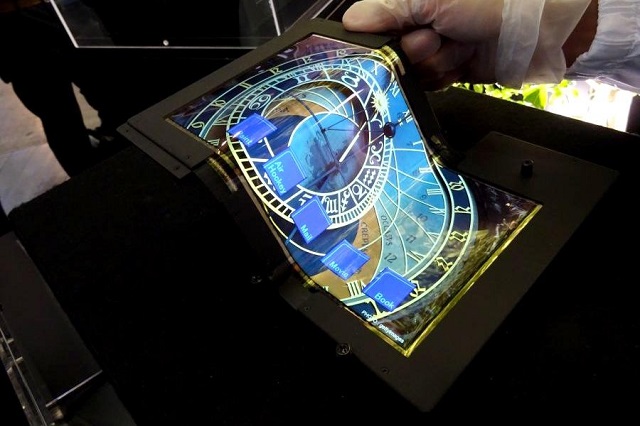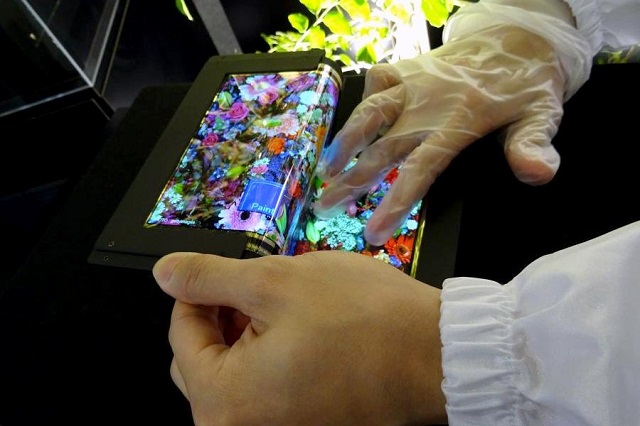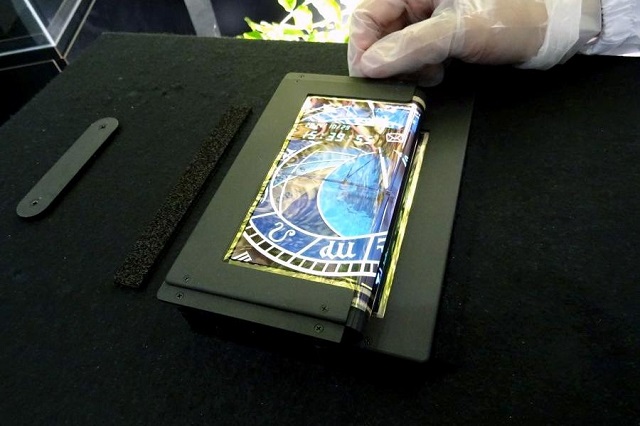Even though Samsung promised us that curved displays would play a major role in its smartphones, the results weren’t that impressive, so it became Japanese firm SEL’s duty to develop a tri-foldable AMOLED display.
The Semiconductor Energy Laboratory, aka SEL Co. Ltd., exhibited its foldable tablet AMOLED display at the Display Innovation 2014 tech show in Yokohama. This design is currently a prototype, so it’s fair to assume that it won’t make its way into a commercially viable product anytime soon. And yet, the concept proves us that future devices don’t need to be entirely flexible. Instead, they could have parts that bend so that the tablet can be stacked and put away in a format that takes way less room.

SEL has been working on flexible displays for a while now, and has even showcased a smaller prototype in May 2013. The actual version measures 8.7″ in diagonal, so it would be suitable for a tablet. To indicate that’s the direction SEL is going, the foldable AMOLED screen is also equipped with a touch sensor.

When folded in thirds, the bend point displays notifications in a way similar to the upcoming Samsung Galaxy Note Edge. If SEL’s foldable displays ever make it into a product, they’ll be far more functional than the South Korean tech giant’s, which seem to be too little, too late. In other words, I doubt the Note Edge will redeem Samsung for delaying the launch of curved displays so much. Sure, Galaxy Round also had a curved screen, but that didn’t come with any additional functionality.

Samsung, LG, Sony and Sharp may be slower at innovating in this field, but it’s very probable that one of these tech giants will end up buying SEL’s flexible display technology. After that, they need to find a way to fit a flexible battery in a foldable tablet. I assume that one more convenient solution would be to make one of the folds bulkier in order to integrate the battery and the other electronic components.
The above clip exemplifies how the foldable AMOLED display works. It should be noted that the touch sensor is functional even if the screen is only partially folded. I’m looking forward to see how this technology will become part of our daily lives in the not-so-distant future.
Be social! Follow Walyou on Facebook and Twitter, and read more related stories about HuddleLamp, which treats multiple tablets as a single display, or the bendable and foldable displays Samsung promised us two years ago.










